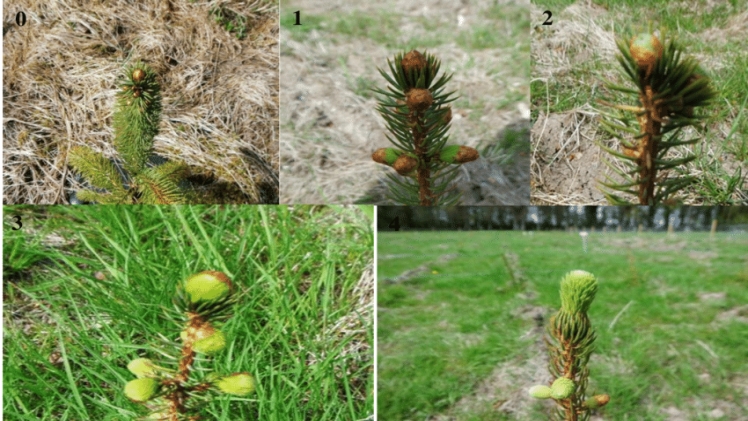Obviously, it is well that autumnal climatic changes prepare perennials of the temperate zone for the rigors of winter. It might seem that if no winter was to be expected, such plants could grow happily in eternal summer. Or so thought the planners of the huge (1 hectare under glass) Devonian Gardens, located over a large shopping mall in Calgary, Alberta, Canada. Their concept had been to surround the clientele with familiar summer vegetation in the depths of Calgary’s cold, snowy winter.
It was a costly error. Deprived of their climate-induced cycle, the familiar native plants became spindly and unthrifty and soon began to die. The thousands of years of evolution that had fitted those plants for the rugged winter of the Rocky Mountain foothills had produced plants that could not do without it. Instead, the native plants had to be replaced with (as nearly as possible) “look-alikes” imported from Florida and California [30].
The dormancy of winter-hardened plants is deceptive. Essential physiological and morphological changes are progressing and will do so only at the low temperature to which evolution has adapted such plants. Spring bulbs (tulips, daffodils, narcissi, Easter lilies, etc.), brought indoors and kept in warm temperatures after flowering, will not bloom again. Such bulbs left in the winter ground (or held in correctly regulated cold storage) undergo histological changes clearly discernible under a dissecting microscope or even a powerful hand lens.
By the time the bulbs are ready to start growing again in the spring, each one contains all the necessary floral parts, minute but discernible. It is by use of a series of very exact storage temperatures that today’s scientific flower producers are able to have spring bulbs in bloom timed for such occasions as Mothers’ Day and Easter. Such imposed temperature regimes are very precise: there are sharp differences in temperature requirements, not only among genera, but even between individual cultivars [31]. The same thing happens (on a truly microscopic scale) within the fruit buds of deciduous fruit trees and shrubs.
It may be a difficult process to figure out, but there are several ways to make sure that you are not paying too much for your goods and services. This is very common and is sometimes referred to as new things you want to be unique.
Finish comment
This is why, as horticultural students, we could cut apple boughs in late spring, place them in water in a warm building, and, apparently miraculously, decorate our Easter dance with apple blossoms. The same phenomenon explains why a blossom freeze wipes out a deciduous tree fruit crop for a whole year. Those blossoms came from fruit buds initiated 10 or 11 months before, which had developed while dormant and apparently inactive during the winter months.

